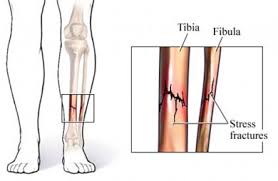
What’s up ? This is THE stephane ANDRE. With my training, I’m interested in biomechanics to avoid injuries. I read « Sport Medicine Media Guide » and I learned some good stuff.
A stress fracture is an overuse injury. Human body creates a new bone to replace a bone that has been broken due to the stress of everyday life. This process is done every day to keep the balance. Unfortunately, this balance can be disrupted because of excessive physical training. There are several factors that can prevent the body from creating enough bone and this make microcracking, called « fracture stress ».
The most common factor of fracture stress is an excessive increase in the intensitiy or frequency of physical activity without adequate rest period. Other factors are nutritional deficiencies, mechanical influences, lack of sleep, systemic factors (hormonal imbalance, etc.) and metabolic bone disorders.
There are case of development of eating disorders and/or amenorrhea (infrequent menstrual periods) for some female athletes who are preparing for a competition. These 2 conditions can create a decrease in estrogen that can decrease bone mineral density. This increase the risk of stress fractures.
Stress fractures are often seen in athletes (especially runners) or military recruiting. For an athlete, 1.6km run is 110 tons of force absorbed by the legs. Bones aren’t made to resist this force (energy) so it’s the muscles that have the function of absorbing shocks.
When the muscles get tired, they stop absorbing the forces and eveything transferred to the bones. Stress fractures occur in almost all bones but are more common in lower bone, expecially the tibia. Depending on the type of sport, there’re distinctive stress fractures such as the elbow in throwing sports, the ribs in golfing and rowing, the spine in gymnastics, the lower extremity in running activities and the foot in gymnastics and bascketball.
Diagnosis
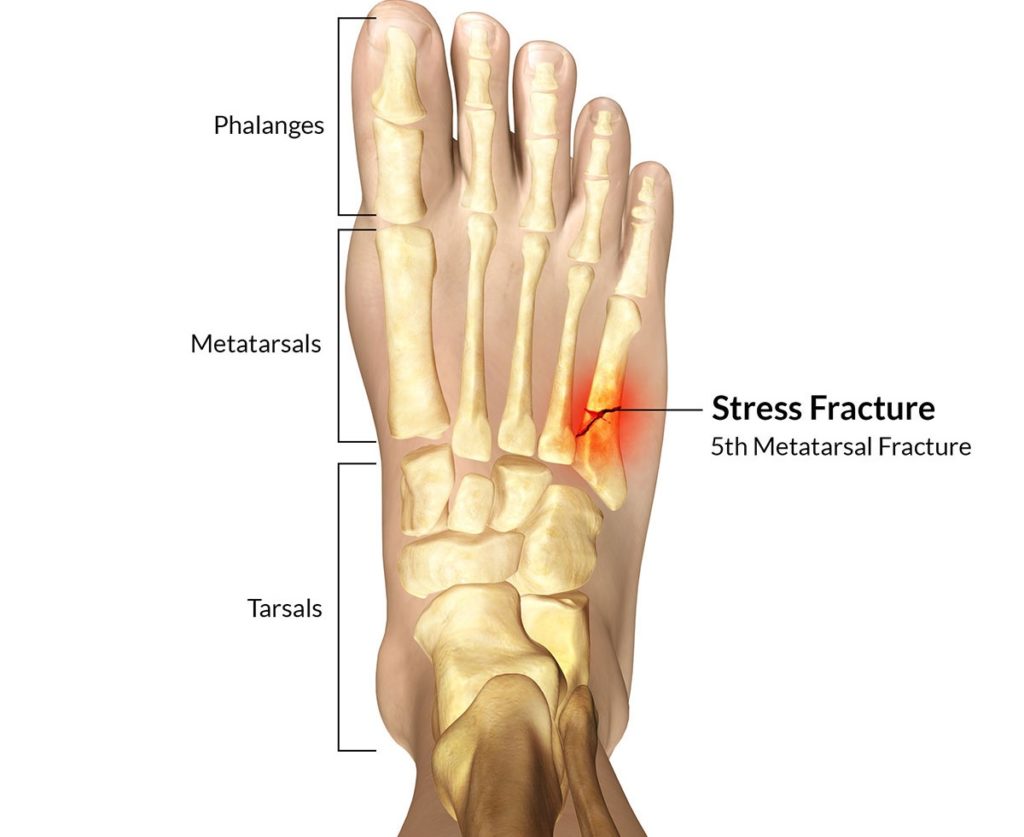
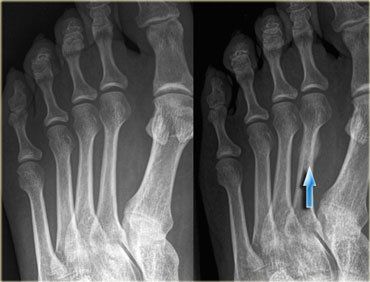
Stress fractures create pain in a limited area directly above the tip of the bone where the fracture occurred. The pain is raw because of physical activity and relived with rest. The sensitivity of the bones is the most obvious conclusion to the physical examination.
With regard to X-rays, this isn’t a tool that actually helps to diagnose an early stress fracture because the bone often looks normal and the microcracking aren’t visible. It’s difficult because after several weeks of rest, the bone begins to repair itself and shows a healing reaction or callus on X-rays.
An early stress fracture is usually confirmed by a bone scan or magnetic resonance imaging (MRI).
Treatment
Stress fractures are generally classified as low-risk (will not become a serious fracture) or high-risk (will become a serious fracture).
Low-risk stress fractures usually require a rest period of 1-6 weeks of limited weight bearing activity progressing to full weight bearing may be necessary. Return to physical activity should be a gratual process.
Low impact activities like swimming or biking are recommended to maintain cardiovascular condition when the pain is gone. When the patient can comfortably perform low impact activities for long, pain-free periods, the patient can begin high-impact activities.
High-risk stress fracture have the danger of becoming a complete fracture. For athletes suffering from chronic pain and having normal x-rays results, it’s recommanded to use a bone scan or MRI. High-risk stress fractures should be treated as traumatic fractures (with cast or surgery) because of complications.
Prevent
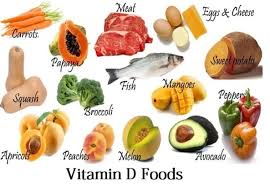
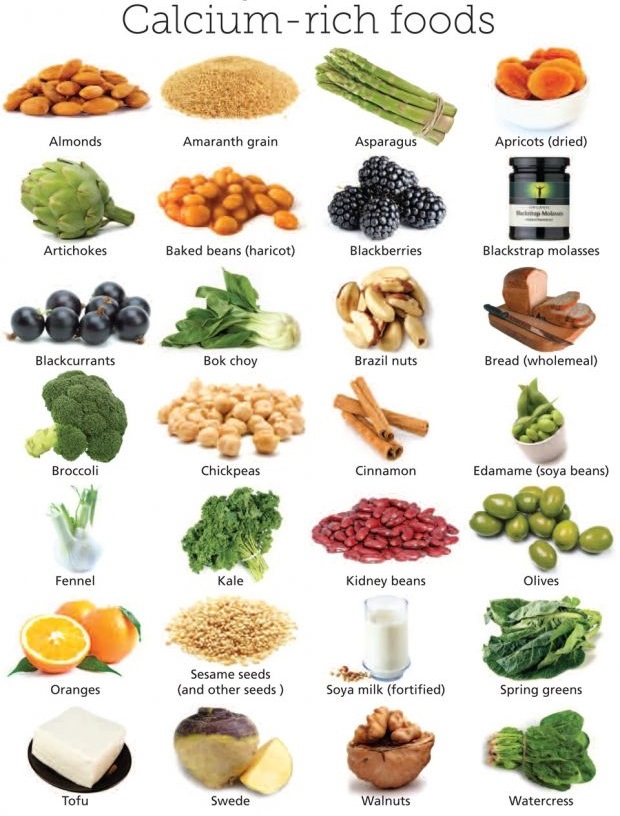
Here are tips developed by AAOS to help to prevent stress fractures :
- When an athete does a new sport activity, it’s necessary to program progressive goals. For example on the 1st day, don’t run 8km but rather increase the distance gradually per week.
- Cross-training => Alternate activities to achieve the same fitness goal helps to avoid stress fracture injuries. For example to achieve a cardiovascular goal, alternate cycling and running (cycling one day and riding the other day) is excellent. Adding strength training and doing flexibility exercises help improve performance.
- Have and maintain a heathy diet with foods rich in calcium and vitamin D.
- Use good equipment. Don’t use running shoes, gloves, etc, very old and very worn.
- If during physical activity it start to swell or the pain starts, stop the activity right away. It’s essential to rest for a few days. If the pain continue, you should see an orthopedic surgeon.
- It’s important to recognize early symptoms and treat them appropriately to return to the sport with a normal level of play.
Stats
- Stress fractures occur less frequently in those of black African descent than in Caucasians, due to a generally higher BMD (bone mineral densitiy) in the former.
- Women and highly active individuals are also at a higher risk, The incidence probably also increases with age due to age-related reductions in BMD.
- Children may also be at risk because their bones have yet to reach full density and strength.
- The female athlete triad also can put women at risk, as disordered eating and osteoporosis can cause the bones to be severely weakened.
Subscribe to my newsletter and share this article if you think it can help someone you know. Thank you.
-Steph
P.S. If you’re in Miami and you like Caribbean food, go to my cousin’s bistro to eat Haitian food, click here .